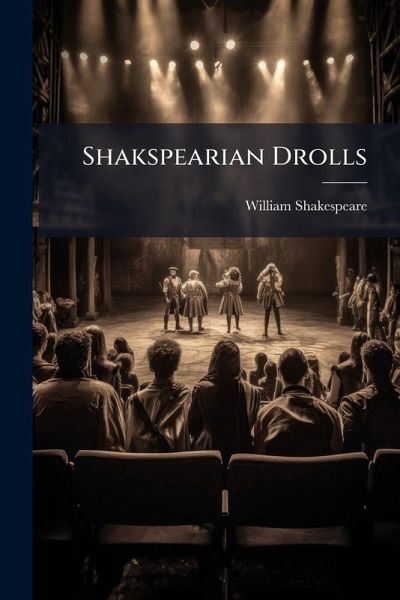
Shakspearian Drolls

PAYBACK Punkte
7 °P sammeln!
Shakspearian Drolls is a fascinating glimpse into the performance history of Shakespeare's plays. This volume presents excerpts and adaptations from a rare book printed around 1698, titled "The Theatre of Ingenuity." These "drolls" are short, comedic scenes extracted from Shakespeare's works and other popular plays, adapted for performance in clandestine venues during a period when theatrical performances were often restricted. Offering a unique perspective on how Shakespeare was perceived and adapted by performers and audiences in the late 17th century, Shakspearian Drolls provides invaluable...
Shakspearian Drolls is a fascinating glimpse into the performance history of Shakespeare's plays. This volume presents excerpts and adaptations from a rare book printed around 1698, titled "The Theatre of Ingenuity." These "drolls" are short, comedic scenes extracted from Shakespeare's works and other popular plays, adapted for performance in clandestine venues during a period when theatrical performances were often restricted. Offering a unique perspective on how Shakespeare was perceived and adapted by performers and audiences in the late 17th century, Shakspearian Drolls provides invaluable insights into the enduring appeal and adaptability of Shakespeare's genius. This collection is a valuable resource for scholars and anyone interested in the history of Shakespearean performance and the evolution of theatrical entertainment. This work has been selected by scholars as being culturally important, and is part of the knowledge base of civilization as we know it. This work was reproduced from the original artifact, and remains as true to the original work as possible. Therefore, you will see the original copyright references, library stamps (as most of these works have been housed in our most important libraries around the world), and other notations in the work. This work is in the public domain in the United States of America, and possibly other nations. Within the United States, you may freely copy and distribute this work, as no entity (individual or corporate) has a copyright on the body of the work. As a reproduction of a historical artifact, this work may contain missing or blurred pages, poor pictures, errant marks, etc. Scholars believe, and we concur, that this work is important enough to be preserved, reproduced, and made generally available to the public. We appreciate your support of the preservation process, and thank you for being an important part of keeping this knowledge alive and relevant.



![Macbeth; a Tragedy. With all the Alterations, Amendments, Additions, and new Songs [by Sir William Davenant]. As it is now Acted at the Dukes Theatre. [Anonymous.] Cover Macbeth; a Tragedy. With all the Alterations, Amendments, Additions, and new Songs [by Sir William Davenant]. As it is now Acted at the Dukes Theatre. [Anonymous.]](https://bilder.buecher.de/produkte/75/75234/75234897n.jpg)
![A Midsummer Night's Dream. ... With Alterations and Additions and Several new Songs [by David Garrick]. As it is Performed at the Theatre-Royal in Drury-Lane Cover A Midsummer Night's Dream. ... With Alterations and Additions and Several new Songs [by David Garrick]. As it is Performed at the Theatre-Royal in Drury-Lane](https://bilder.buecher.de/produkte/75/75240/75240604n.jpg)







